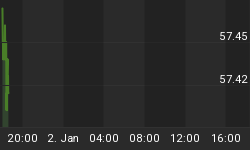The U.S. is mildly recovering, while Europe is in recession. Eur/usd could again decline to 1.26.
U.S.: Private debt is still high.
In the U.S., the combination of job and G.D.P. growth should continue for some more time. Nonetheless, the recovery remains fragile and household debt is still high. Real spending rose in the first months of this year (0.2% in January and 0.5% in February), but real disposable income declined. As a result, household saving rate fell to 4.6% to 3.7%. Why?
Income growth is non-existent, wages remain low. Stocks increased, but private investor participation is limited. Finally, housing starts have climbed since last summer. However, most multi-units are not sold. They are instead rented, as households are probably still lacking the confidence to invest in the sector. Since 2009, new highs were reached only 3/5 years after prices hit the bottom (2010).
Mr. Bernanke stated nobody can be sure current improvement in the job market will last. Past history (1952/61, 1969/1982) confirms that the unemployment rate might decline short-term, but could rise again over the longer-run. Rates should stay low, until the public debt of $15 trillion will improve. In fact, every rate hike of 0.65% increases the debt's cost by $100 billion. A new stimulus package is possible, if growth starts to fade. The timing of the operation is not clear yet, since it could be seen as a direct support to Mr. Obama re-election.
Emerging markets bottoming?
cted, the E.C.B. left rates unchanged last week. The central bank wants to size the effects of the various measures before acting again. Inflation is under the lens. In effect, while the northern states are trending, southern countries are in recession. Youth unemployment is a big issue that could jeopardize the future of Europe. Attention is now focused on the elections in France and Greece. According to recent pools, Mr. Sarkozy and Mr. Holland are sharing equal popularity. Apparently, both candidates support Europe and a close alliance with Germany. Eur/usd could decline to 1.26 again, supported by seasonal and technical conditions.
As developed economies are limited by sub-trend growth, emerging markets could lead the recovery, despite a poor 2011. In the past, they have shown a great independence, a better business cycle and a more stable fiscal policy. Last year, rates were increased to calm inflation. Restrictive policies should contract growth this year as well. However, the Chinese government has already begun easing its monetary policy and bank lending rose in December. Risk stays high. Nevertheless, a turnaround of the emerging markets could increase the demand for raw materials, eventually in the last part of this year.

















